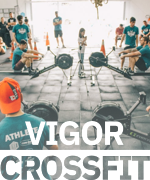For example, the earth seems to be a small house or a size of 12.7 meters wide hologram. The space giants are self-regulating and are equipped with various options, so you can customize your patrols based on your preference for students. The strengths of the study are linked to the development and implementation of complete and dedicated motor and cognitive TR training using a VR system, whereas most of the previous studies have mainly focused on feasibility/usability. In addition, our VR system was available in the asynchronous modality to enable patients to undergo repetitive and intensive training, even without the direct supervision of the therapist. In addition, the caregivers acted as cotherapists during the rehabilitation session, reducing their burden and efforts and helping improve patient outcomes. Indeed, the growing literature demonstrates the importance of family members in the rehabilitation pathway and the patient’s reintegration [62].

This platform enabled students to view the entire arterial and venous system of the body, strengthening their theoretical and practical operation skills. Zhang et al [41] developed a highly realistic scenario simulation system for improving teachers’ teaching ability and cultivating students’ initiative, enthusiasm, and autonomous learning ability. Over the last 15 years, VR technology has been extensively implemented in nursing professional skills training. As mobile computing and sophisticated software programs continue to develop, highly immersive VR systems have become increasingly affordable and accessible [40]. Popular VR systems currently used in nursing professional skills training include Kinect from the United States, Nintendo Wii from Japan, HTC Vive from Taiwan, China, and Samsung Gear VR from South Korea. By integrating these VR systems into nursing education, we aim to facilitate the development of students’ initiative and promote self-directed learning abilities, ultimately enhancing their clinical practice acumen.
Professional Development
It enables quantification of information on a specific research topic derived from online scientific citation databases, such as details on authors working in a field, publication numbers, and the distribution of research institutions [10]. Bibliometrics is a powerful tool that can assist in identifying significant literature in a research field and provide valuable data, such as keywords, institutions, country linkages, and distribution characteristics, in the form of a knowledge map. By quantifying the current state and future trends of the research topic, bibliometrics serves as an essential aid in comprehending the development of a particular field [11]. Generally, the greater the number of references included in a bibliometric method, the better we can comprehend the landscape of a research field [12]. A scoping review conducted by Yang and Huang [5] outlines the applications of VR technology in nursing professional skills training. There has been limited research on the scientific output of this field using bibliometric and visualization analyses.
Virtual reality is a modern technology enabling the three-dimensional, computer-generated environment that users may explore and interact with. In this way, simulated environments come alive and can be perceived by the human senses (mostly by, hearing and eyesight). As for now, virtual reality without special equipment is not complete and immersive. To look into the world of virtual https://www.globalcloudteam.com/virtual-reality-in-education-benefits-and-tools/ reality, one needs to have at least a headset. Luckily, you can pick up the right set within your pricing range because there are quite a few choices available on the market. By allowing students to view things like life-size dinosaurs or a model of the solar system in the classroom or in their own homes, AR technology can bring academic subjects to life for younger learners.
Apple AR: Best for Visually Engaging Apps
From its gaming industry beginnings to new applications in military training, the VR trend seems to be picking up more and more steam, with its scope expanding further every year.Unsurprisingly, many old-fashioned industries were quick to tap… For instance, you can come face to face with a majestic whale in theBlue VR app, or to climb the highest mountain in the world — Everest in Everest VR. It’s a perfect game for both kids and adults who https://www.globalcloudteam.com/ skipped this part of human biology at school. Moreover, you can use the app without a VR headset by using the fullscreen mode in the settings of Anatomyou. Anna Frank was a Jewish girl who was hiding in a house from the Nazis and was snitched on and others hiding with her in a secret annex of the house. The Diary of a Young Girl stirred up feelings of millions throughout the world during one of the most gruesome pages of human history.
For her latest project, McGivney has partnered with a Greater Boston-area public charter high school to study how immersive experiences can impact how students see themselves as scientists. In one project, students in a civil engineering course observed different structures around the world, visiting the pyramids in Egypt and soaring over skyscrapers in New York City. He noted that leaps in digital lightfield technology are steering virtual reality toward a distinctly Holodeck-like future — no wearables required. It’s fun to learn about space and the Earth, but it’s also important enough to learn about the human brain. InMind VR 2 is set inside the brain of John, a teenager, and is inspired by Inside Out, the much-loved Pixar movie.
Join hundreds of thousands of subscribers, and get the best content on technology in education.
As headsets and software become cheaper, virtual reality will ultimately become a ubiquitous part of education. By adding a new dimension to the learning experience, virtual reality can revolutionize education across every level. We are currently only seeing the early stages of an educational paradigm shift being created by virtual technology. At the K12 level (kindergarten to 12th grade in the US), virtual field trips are among the most common ways educators use VR. For example, in 2019, the Schaumburg School District 54 in Illinois utilized virtual reality kits in each of its 28 schools to bring students on virtual field trips to the moon, World War I battlefields, and the Great Hall at Ellis Island. Vocational training will really begin to feel the impact of virtual and augmented reality over the next year or so.
- Nursing students, serving as a valuable pool of talent for the clinical nursing team, are essential figures in the advancement of nursing practice.
- This application allows students to travel around the world and teach them the basics of each ecosystem.
- To promote growth, policy and financial support should be provided to encourage researchers to learn from foreign advanced experience and enhance VR technology.
- With AR, students can see digital assets in the real world rather than being hosted in an entirely virtual space as they are within VR.
- This type of software emphasizes immersive patient scenarios presented on the computer screen in which students are “placed” in a simulated clinical setting to observe and address the patient’s discomfort and pain.
- There are resources available that turn educational content into interactive experiences.
- Steam’s VR Museum of Fine Art allows users to view world-class paintings and sculptures up close – including the Mona Lisa – without fighting with crowds or protective glass.
Eileen McGivney has spent her career studying education systems around the world. Now, her research isn’t taking her to a new country or continent, but into an entirely new reality. There’s reams of research about the so-called Proteus Effect, or how a virtual reality user’s behavior might be subtly affected by their avatar’s characteristics. To help show the sheer scale of objects in space, Titans of Space does things like shrink down planets to a millionth of their actual size. In the app, you’ll find a variety of options, including the ability to customize the tour of space for you or your students. The app is available on a variety of platforms, including the Oculus Go and the Samsung Gear VR.
Best 7 Online Courses to Boost Your Productivity in 2022
As a result, it is critical to comprehend the research status and hot spots of this field to aid in the advancement of nursing professional skills for nurses and nursing students. This study strives to offer a comprehensive analysis of the research field using the Web of Science (WOS) Core Collection as a basis and to serve as a valuable reference for future research. This requires an interdisciplinary approach that takes into account the needs of all stakeholders, including students, teachers, nurses, and software developers [42]. Thus, research on VR-based nursing professional skills training must involve a broad range of individuals to create effective teaching strategies that meet the unique needs of every student.
In the field of nursing education, there are notable technical issues that exist with the application of VR technology at present. Caylor et al [37] pointed out that VR systems are faced with the problem of unclear navigation mechanisms within the operation interface. Poor experiences among nursing students during simulation learning are attributed to the confusing nature of the navigation interface within VR software platforms.
Benefits of using virtual reality in classrooms
Although it sounds similar to virtual reality, the key difference is that AR incorporates your real surroundings, whereas VR is made up entirely of virtual information. Educators are constantly looking for resources and tools to get students engaged and excited about the content they are teaching, and an interesting option these days is augmented reality (AR) tools. While many people visit foreign countries on the continents, not many can boast about traveling into the deep and witnessing the most regal creatures of the Earth.

Augmented reality and virtual reality (AR/VR) technologies are creating new means for education by opening doors for students to learn and teachers to instruct in a more immersive, technological environment. For example, medical school students can engage in experimental surgeries in virtual reality environments and biology pupils are able to engage with plants, mammals, birds, insects, and amphibians via technological simulations. But not all universities have equal access to leverage these and other emerging technologies. This means that some students face disadvantages in their preparation and on the job market because of a lack of economic and network resources to engage with new technologies.
Online Learning Strategies for Students
VR classrooms have been able to give students opportunities to raise their hands, ask questions in an organic way and generally feel more directly invested. That’s in comparison to what CEO Mat Chacon of VR company Doghead Simulations described as the “pretty flat experience” of traditional online courses. Imagine if you could take the concept of painting and apply it to 3D environments. In the app, students can create their own artwork in a 3D environment, through using a variety of different brushes and colors. This app is especially good for those looking to learn more about colors and how they mix. As the name suggests, in the app you’ll find yourself in a variety of different situations in which you have to speak in front of others.

